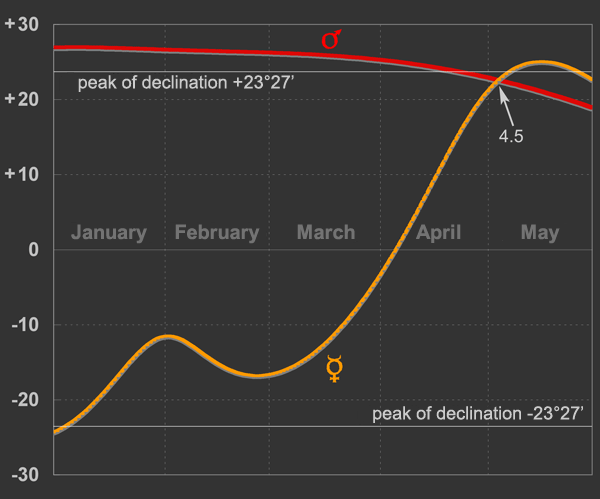|
Marco Fumagalli - The earthquake of western Sichuan
|
||||||||
|
The declination of Mars and Mercury
|
||||||||
|
The analysis of these figures cannot be concluded without a last important remark on the two planets mainly responsible for the achievement of the event, Mars and Mercury. Mars’s declination is at its highest during the first months of the year, beyond the so-called peak of declination of the ecliptic, a limit beyond which the planets can be always considered in relation to each other, because of the exceptional condition in which they are found.
9. Declinations of Mars and Mercury in the first five months of 2008 This great distance relative to the equator confers to the malefic planets a peculiar strength which increases their destructive effect [26]. The 4th of May, that is the day following the station of Saturn and preceding the New Moon, Mercury arrives at the declination of Mars which has already begun its descent, and is going towards the peak. On the 12th of May, the day of the earthquake, its declination is 24,88. The encounter with the malefic planet, close to the New Moon and to the peak of its declination, confers to Mercury its full destructive power, that will manifest itself the day when it reaches Mars longitude of the eclipse [26] Two examples of Mars in its peak of declination: solar eclipse of April 17, 1912, before World War I; solar eclipse of November, 14, 1659, before the earthquake in Emilia on the 22d of March 1661. The latter is described by Placidus (Ephemeridum, p. 248). |
||||||||
